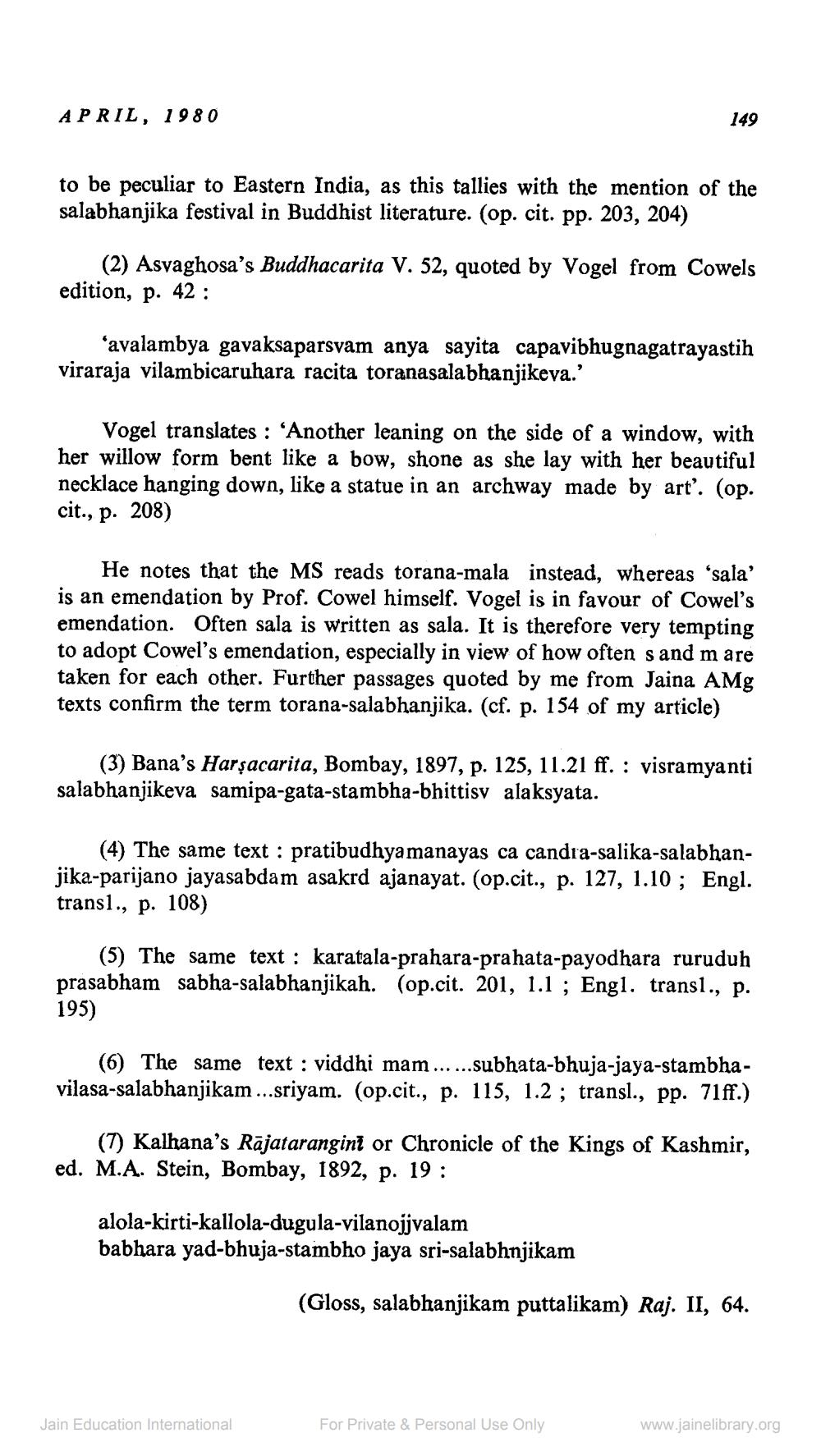________________
APRIL, 1980
to be peculiar to Eastern India, as this tallies with the mention of the salabhanjika festival in Buddhist literature. (op. cit. pp. 203, 204)
(2) Asvaghosa's Buddhacarita V. 52, quoted by Vogel from Cowels edition, p. 42:
149
'avalambya gavaksaparsvam anya sayita capavibhugnagatrayastih viraraja vilambicaruhara racita toranasalabhanjikeva.'
Vogel translates: 'Another leaning on the side of a window, with her willow form bent like a bow, shone as she lay with her beautiful necklace hanging down, like a statue in an archway made by art'. (op. cit., p. 208)
He notes that the MS reads torana-mala instead, whereas 'sala' is an emendation by Prof. Cowel himself. Vogel is in favour of Cowel's emendation. Often sala is written as sala. It is therefore very tempting to adopt Cowel's emendation, especially in view of how often s and m are taken for each other. Further passages quoted by me from Jaina AMg texts confirm the term torana-salabhanjika. (cf. p. 154 of my article)
(3) Bana's Harşacarita, Bombay, 1897, p. 125, 11.21 ff. visramyanti salabhanjikeva samipa-gata-stambha-bhittisv alaksyata.
(4) The same text : pratibudhyamanayas ca candra-salika-salabhanjika-parijano jayasabdam asakrd ajanayat. (op.cit., p. 127, 1.10; Engl. transl., p. 108)
(5) The same text: karatala-prahara-prahata-payodhara ruruduh prasabham sabha-salabhanjikah. (op.cit. 201, 1.1; Engl. transl., p. 195)
(6) The same text: viddhi mam.... ..subhata-bhuja-jaya-stambhavilasa-salabhanjikam...sriyam. (op.cit., p. 115, 1.2; transl., pp. 71ff.)
(7) Kalhana's Rajatarangini or Chronicle of the Kings of Kashmir, ed. M.A. Stein, Bombay, 1892, p. 19:
alola-kirti-kallola-dugula-vilanojjvalam
babhara yad-bhuja-stambho jaya sri-salabhnjikam
Jain Education International
(Gloss, salabhanjikam puttalikam) Raj. II, 64.
For Private & Personal Use Only
www.jainelibrary.org




